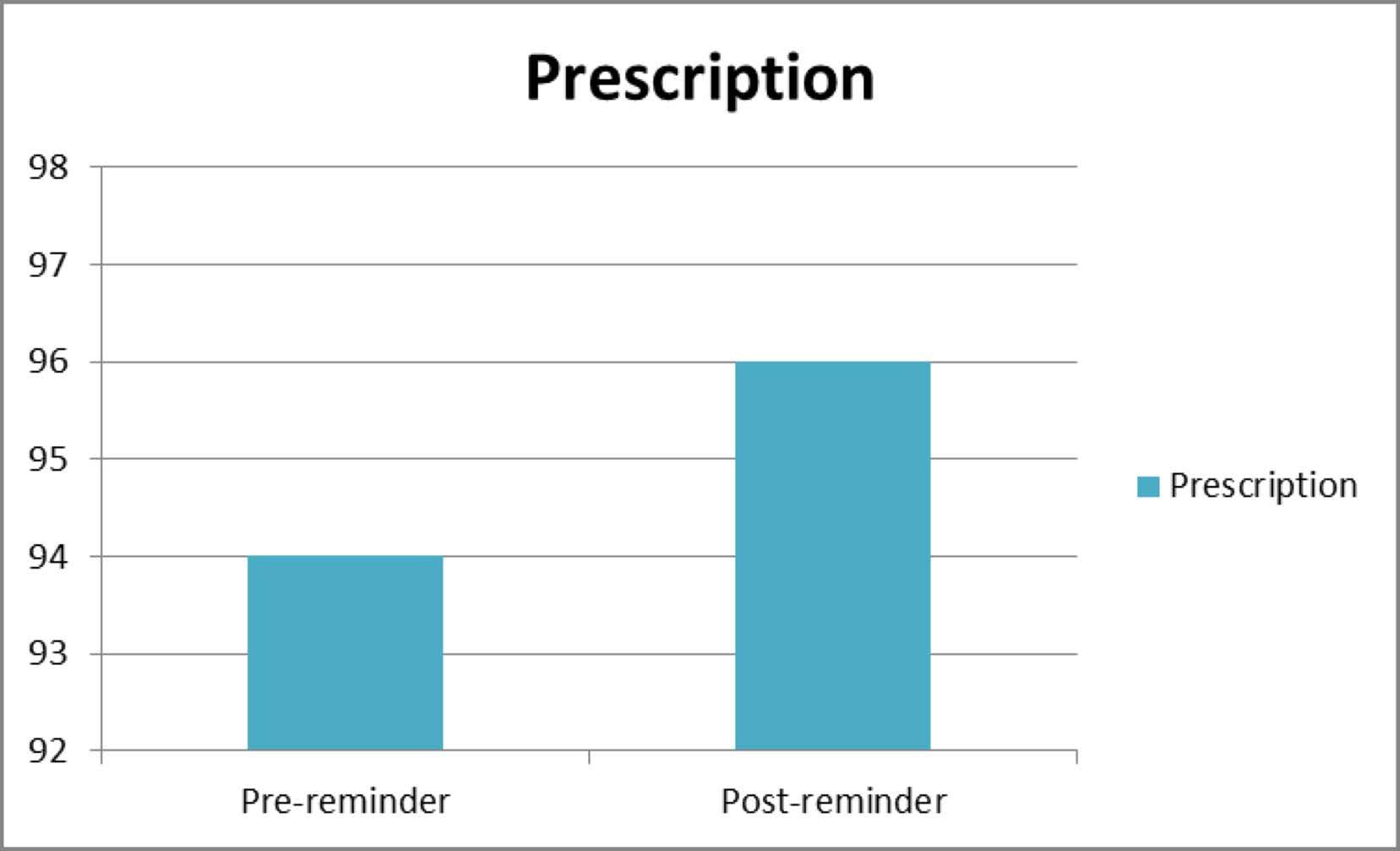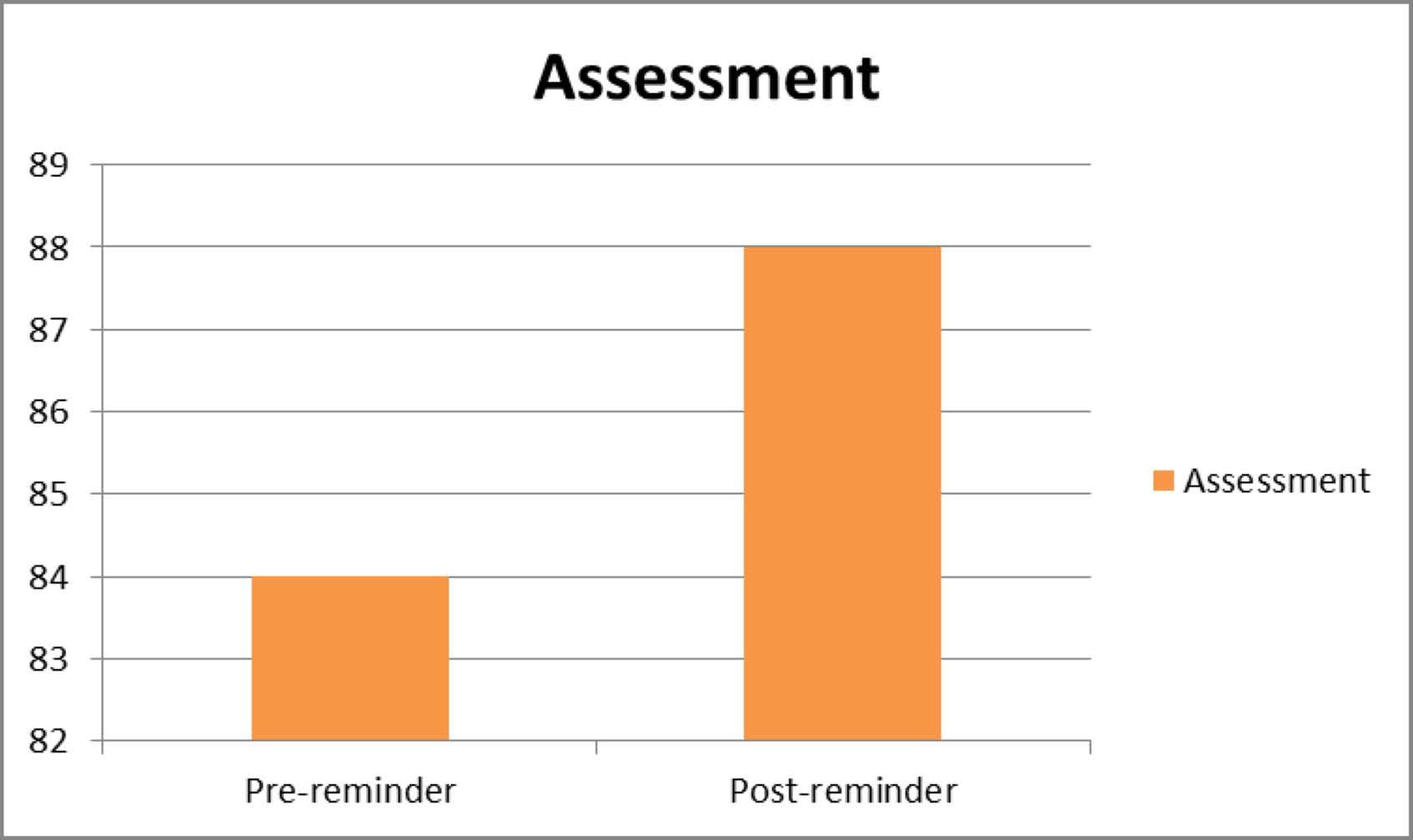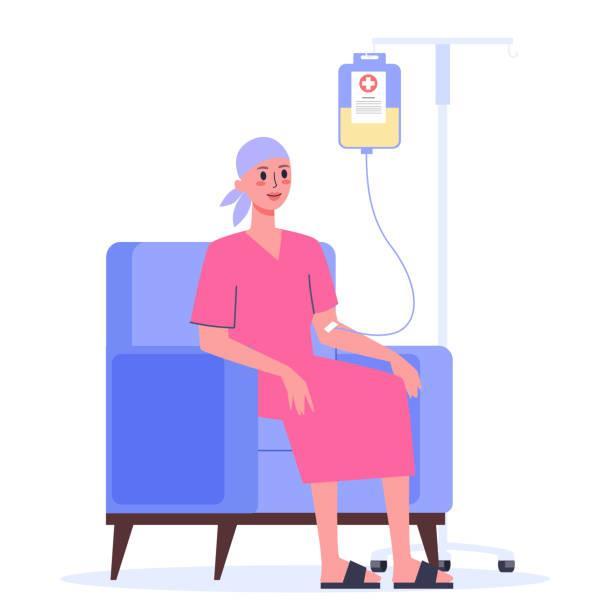
1 minute read
Simple, point-of-care reminders improve VTE risk assessment and prophylaxis prescription in medical patients
Rohin K. Reddy1,2, Michele Mantega1, Zahra Arzoky1, Asjid Qureshi1
1 Department of Endocrinology and Metabolic Medicine,Northwick Park Hospital, London, UK
Advertisement
2 National Heart and Lung Institute, Imperial College London, London, UK
Aims
NICE guidelines recommend assessment of all patients >16 to identify VTE and bleeding risk, with thromboprophylaxis should be start ed within 14 h of admission.
We sought to improve VTE assessment and prescription rates by introducing a point-ofcare reminder by modifying inpatient lists via the electronic health record.
Methodology
2-cycle audit, evaluating the effect of addition of a reminder column todaily inpatient lists


Retrospective chart review was performed to calculate rates of VTE assessment and prophylaxis pre-and post-intervention..
Results and Lessons
During the baseline pre-intervention period, 68/81 (84%) of patients were appropriately assessed , and 73/81 (94%) were prescribed appropriate VTE prophylaxis.
In the post-intervention period, 23/26 (88%) of patients were assessed appropriately, and 25/26 (96%) were prescribed appropriate VTE prophylaxis.Appropriate VTE risk assessment increased by 4% and thromboprophylaxis prescription increased by 2% post-intervention.
Through seamless integration in existing clinical workflows, we demonstrate VTE assessment and prophylaxis can be improved via simple point-of-care reminders.
We aim to replicate this work in future cycles involving a greater number of patients across the Integrated Medicine Division at our institution.
Improving the Management of Anaemia in Solid Tumour Patients receiving Chemotherapy at a Tertiary Oncology Centre
Sina Yadollahi, Kim Teasdale, Shenthiuiyan Theivendrampillai, Luke Nolan, Jack Broadfoot Cancer Care, University Hospital Southampton (UHS) NHS Foundation Trust, Southampton, United Kingdom
Background
Theprimaryaim of theauditwas to determinethecurrentmanagement of anemia in cancerpatientsreceiving chemotherapy at UniversityHospitalSouthamptonandhow it measuredagainstcurrentnationalguidelines. Theauditwasdesigned to identifywhat we aredoingwellandwherethingscan be improved on if any.
Introduction
Anaemiaaffects up to 67% of cancerpatients. Anaemia is associatedwithfatigue,reducedquality of life andworseoverallsurvival. Liberal red bloodcelltransfusion(RBCT)leads to adverseoutcomesincludingtransfusion-associatedcirculatory overload(TACO).

NICEguidelinesrecommendrestrictiveRBCTanduse of transfusion-sparingagents.
NICE/ESMO/ASCO guidelines
Recommendtreatinganaemiawitherythropoiesis-stimulatingagents(ESA)andintravenousIron Recommendbaselineandregularassessment of ironstudiesduringchemotherapy Haemoglobin(Hb)transfusionthreshold: 70-80g/L or severesymptomsrequiringimmediatecorrection Singleunittransfusionrecommended in non-bleedingadults
Pre-assessment of TACO riskfactorsrecommended(BSH,ISBT,SHOT)
Aims & Methods
To assessandoptimiseanaemiamanagementandRBCTsafety in linewithNICE(TA323and NG24), ESMOand BSHguidelines.
Preandpost-interventionaudits of allpatientsstartingchemotherapy in Sept/Oct 2020 andMar/April 2021 (6monthfollow-up periods).

Interventions
Educational: multi-disciplinaryteachingsessions,postersandcomputerscreensavers.
IT: new pre-chemotherapybloodtestbundle,mandatorypre-RBCTriskassessment,andprompts in chemoreferral forms.
Governance: newSouthamptonGeneralHospitaltrustguidelinesandcancer-specificRedBloodCellTransfusion codes(via liaisonwithhospitaltransfusioncommittee).



Conclusions
Multi-disciplinary staff education and new standard operating procedures improved adherence to national guidelines, reduced RBCT and improved patient safety.










